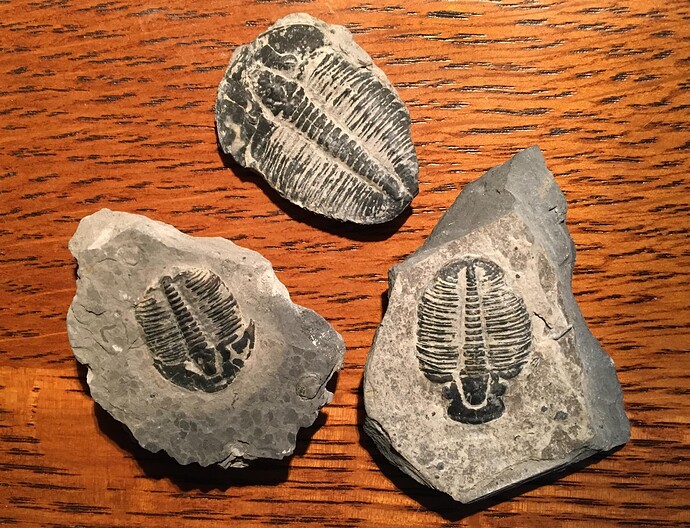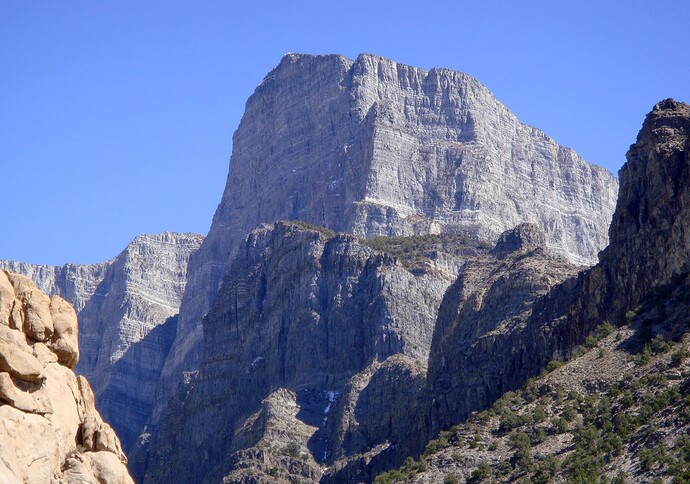I’m not gonna lie, if I had the kind of dough that would allow me to spend $15 or $20mm on an impulse item, I’d bid on this.
Ha. That would be one heck of an impressive halloween decoration.
I kid, I kid.
Yeah, until some kid wipes his chocolate covered fingers all over it or knocks it over.
That is pretty cool, crazy to consider that thing was once alive!
Yeh that’s pretty cool.
I’d defo be extravagant like that if I had the mega riches.
This is what I always wondered… what was here before the dinosaurs?
Now I the answer, before the Triassic period etc. sharks, fishes, atrhropods… etc.
BUT - they constantly find dinosaur bones and the likes.
But I always think - what if there was something else even before the dinosaurs. I think the furthest we can dig into the Earth is about 9km. It’s not particularly far.
And we cannot reach the deepest depths of the ocean.
So what’s down there?
Anyway - I’d defo buy it if I could ![]()
True, was actually thinking about this the other day: I wonder why they’ve never tried to harness the earths natural energy from the heat down there?
Are you assuming the further down one goes, the older the fossils will be. If so, that’s not quite how it works.
If it did, the material needed to cover up those fossils had to come from somewhere. A meter of soil deposited in one spot needs to be removed from another. Besides, plate tectonics constantly churn the planet’s crust as the different plates move around and overrun other plates or subside beneath them. Erosion eventually levels off everything, anyway, confusing the layers even more.
For example, the Himalayas began forming 40–50 million years ago, yet the granite rock at the tops of those mountains is around 200 million years old. The rocks that make up the landscape east of Hudson Bay in Canada are supposedly the oldest on Earth at around 4.25 billion years old, and that rock sits on the surface.
The deepest hole ever drilled was the Kola Borehole in northwestern Russia. The Soviets made several attempts to drill even further, but it was too hot for the drill bits. If I remember right, about 300° C. The heat would need to be transported to the surface to power steam turbines. In other words, spending tens of millions of dollars to drill a 26 cm hole 7 km into the ground, then sending down a pipe full of water to bring back to the surface wouldn’t amount to much. The heat’s essentially out of our reach.
What isn’t out of reach is natural heat sources from volcanic activity nearer the surface. Iceland is, in essence, a big volcano. The country obtains about two-thirds of its electricity from geothermal-powered turbines. In New Zealand, the volcano fields north of your location have been exploited for geothermal energy. I just looked it up; that heat accounts for about 17 percent of New Zealand’s electricity.
Sorry for the long-winded post. I’m killing time tonight, I guess.
No. I know that’s not how it works.
What I am aluding to is that I do think there was something before the dinosaurs. We would never find/ prove it.
The fossil record is pretty clear on what preceded the dinosaurs: reptile-like groups, such as pelycosaurs, therapsids, and archosaurs. Before them, smaller reptiles evolved from amphibians, which evolved from fish-like animals with lungs instead of gills. Before them, animal life existed only in the oceans. Of course, the insects showed up a bit before then, as did land-dwelling plants.
Before this, multi-cellular life was confined to the oceans, with a complex history that dates back about 3.5 billion years. The earliest fossils are 3.5 billion-year-old microbes.
Of course, 3.5 billion years is an unimaginably long time with many gaps, extinction events, dead ends, and other mysteries. Even so, the general evolution trend on the planet is pretty clear. What happened in the oceans during those three billion years is much less understood, but the huge diversity of organisms found in the oceans today speaks to the complexity of it all.
You can quickly look up all this, so I’m guessing you’re speculating that a huge piece is missing.
I can’t remember where, but I read an article a couple of years ago speculating what would be left in the fossil record of humans two or three hundred million years down the road if we suddenly disappeared today. The conclusion was not much, if hardly anything. We’ve been around for some 40,000 years, which isn’t very long. Could there have been an intelligent species of, perhaps, archosaurs that preceded the dinosaurs for an equally short time as humans? It seems doubtful, considering the tiny brains of their relatives, but there’s room for speculation. Three and a half billion years is a long time for all kinds of crazy things to happen.
In the western Utah desert, not far from where we would range our sheep in the winter, there’s a mountain called Notch Peak (a really cool place) in a small range of mountains.
There’s one location in these mountains with exposed layers of shale rock dating back around 250 million years. The thin shale layers are sedimentary deposits from the bottom of a shallow sea. Between the layers are fossils from the dominant animal life form in the planet’s shallow seas at the time — trilobites. Splitting these layers with a hammer and chisel is easy.
When I worked at a newspaper, I went out there on a story with the paper’s science writer. He knew exactly where to find these layers of shale. Here are three trilobite fossils that I found.
Notch Peak
The view from the top is spectacular, as is the sheer vertical drop of 2,200 feet. I’ve hiked to the top a couple of times from the other side.
There is a gap though. Even in human evolution there’s a missing period not accounted for in human evolution.
We can never know exactly what walked the earth before dinosaurs.
Anyway thanks for the info, as always.
That is an interesting thought… Have you seen “Ancient Apocalypse” that just came out on Netflix? “Secrets of the Saqqara Tomb” on Netflix was also pretty good. I could watch shows on archeology all day long. I find myself more drawn to archeology relating to past civilizations and homo sapiens rather than prehistoric periods relating to dinosaurs or before that time. I think in my mind, I just envisioned amoeba before the dinosaurs and left it at that. I know I’m missing millions of years of evolution in between. ha
Love this. In NJ there are some brooks about an hour from me where fossils can be found right in the stream. Fossils erode from the banks and bottom of the brooks and collect in gravel areas. The stream cuts through sediments that were deposited during the Late Cretaceous Period.
I take my 8 year old nephew here to go fossil hunting a few times a year since it is a public park. We’ve found prehistoric shark teeth, belemnites, and oysters on every visit. There are dinosaur and mammals bones and teeth that can be found but I have yet to see that. It can be overwhelming at times when you don’t always know what you’re looking at. Everything starts to look like rocks after a while.

